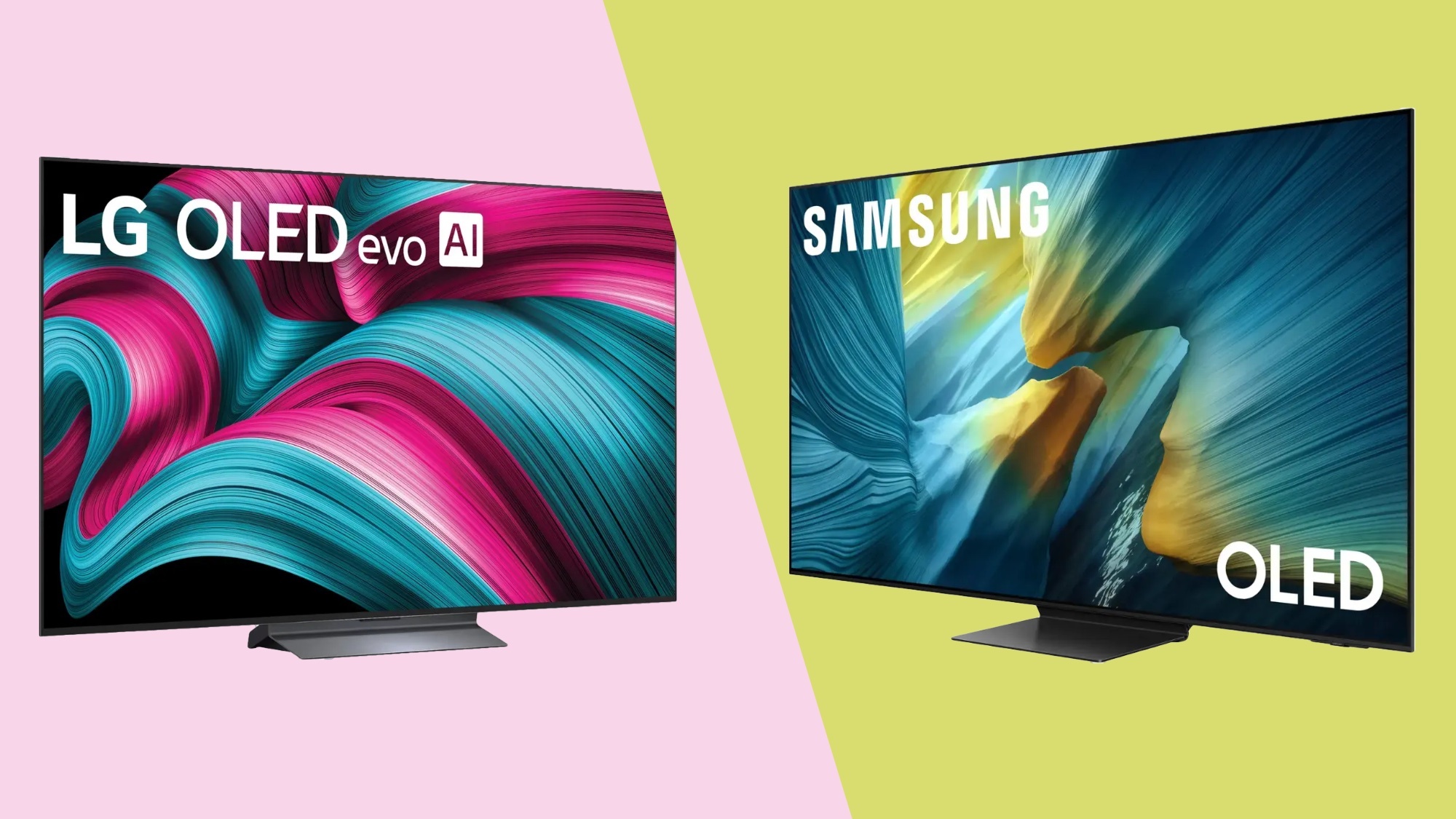Vizio’s 2018 TVs Are Bolder, Brighter and Smarter
We went hands on with Vizio’s M-Series, P-Series, and the hot new P-Series Quantum TVs.
Hot on the tail of TV reveals by Samsung and LG, Vizio has given us a first look at its 2018 lineup. From the budget-minded E-Series on up to the premium P-Series — including the new P-Series Quantum — Vizio is looking to be a strong contender for TV shoppers to watch.
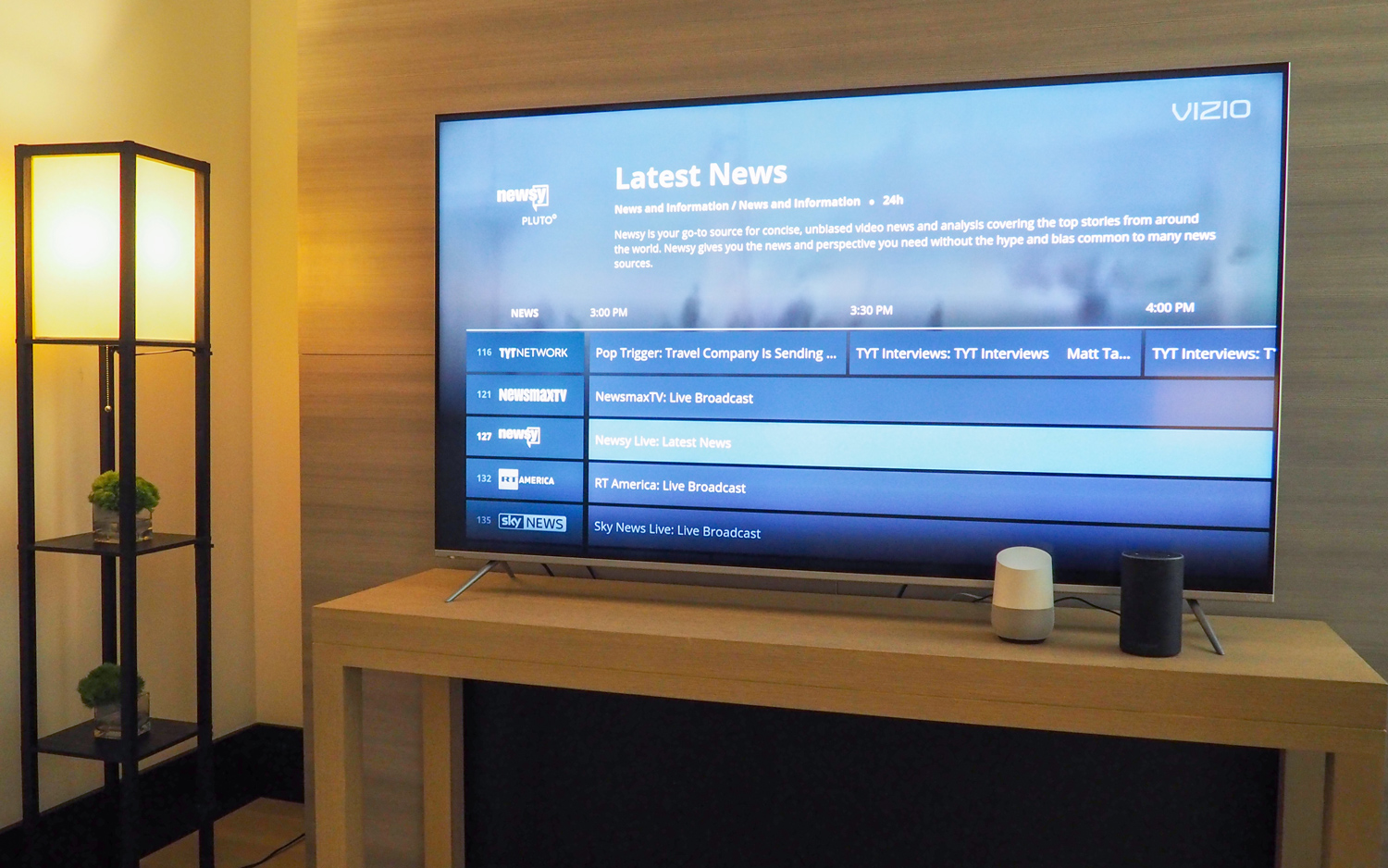
At Last, A Tuner
Vizio's new SmartCast TVs see improvements across the board, but there's one feature that's worth mentioning right up front: All of the new Vizio TVs in 2018 include a TV tuner. In recent years Vizio opted not to include a built-in TV tuner, relying instead upon streaming video and external content sources like cable boxes and Blu-Ray players.
MORE: Our Favorite 4K (Ultra HD) TVs Available Now
While many shoppers were happy to get an affordable home theater display, the tunerless designs limited their appeal among cord-cutters. The return of the TV tuner may not be a major advancement in modern TV technology, but it does present an improved value proposition for consumers, in a brand that already made a strong case for affordable TVs.
SmartCast
Other improvements seen on all of Vizio’s 2018 models include refinements to the SmartCast operating system, the company's proprietary smart TV platform built around Google Chromecast.
In the past Vizio relied exclusively on Chromecast for all apps offered on the TV. While not a bad option given Chromecast’s support for thousands of apps across Android and iOS, it did mean the TV owners had to provide a second device to get a complete smart TV experience.
The new models still offer Chromecast functionality, but Vizio has also taken steps to improve the streaming apps supported natively on its TVs. The current incarnation of SmartCast supports more than 10 popular streaming apps, including Netflix, YouTube, Hulu and more, with new additions on way.
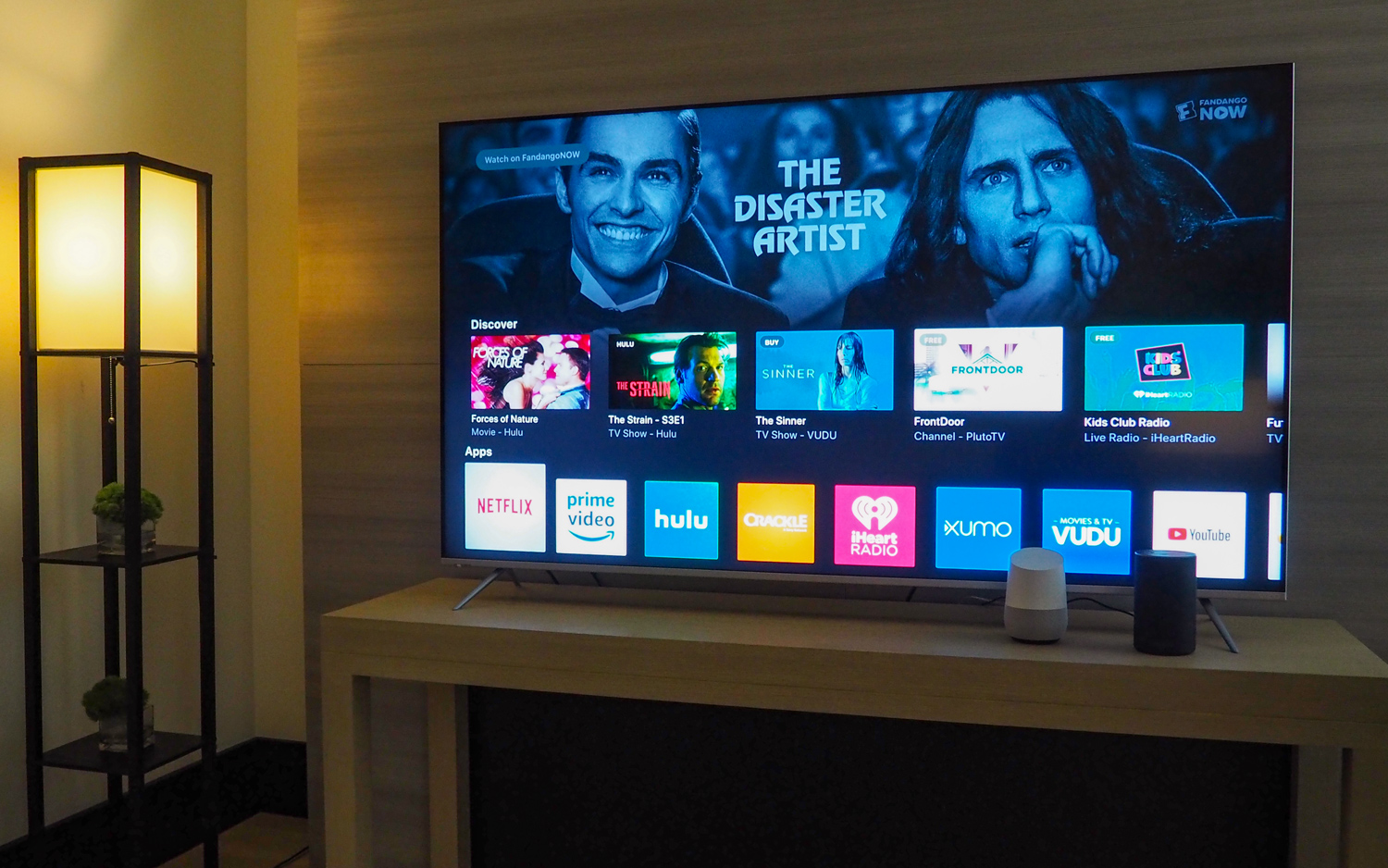
One of these offerings, currently under the working name of “FreeTV” (Vizio says the name isn’t set in stone) is a partnership with live TV streaming platform Pluto TV, which includes a large selection of live channels, including news and sports. In this partnership between Vizio and Pluto TV, the new FreeTV app comes pre-installed on the television, and will offer a large selection of Pluto’s live content, in an interface that matches Vizio’s other content guides.
Future developments are likely to include additional content partners, and full integration with Vizio’s content management tools.
P-Series Quantum
The new Vizio flagship is the 65-inch P-Series Quantum, a 4K Smart TV that supports Dolby Vision and other HDR formats (HDR10 and HLG), while boosting picture quality with a quantum dot layer and top-of-the line backlight. Combined with a buttery-smooth 240Hz refresh rate, a slim-bezel design and a design that compliments the display with silver accents and polished aluminum stand, the P-Series Quantum is shaping up to be one of the best TVs of the year.
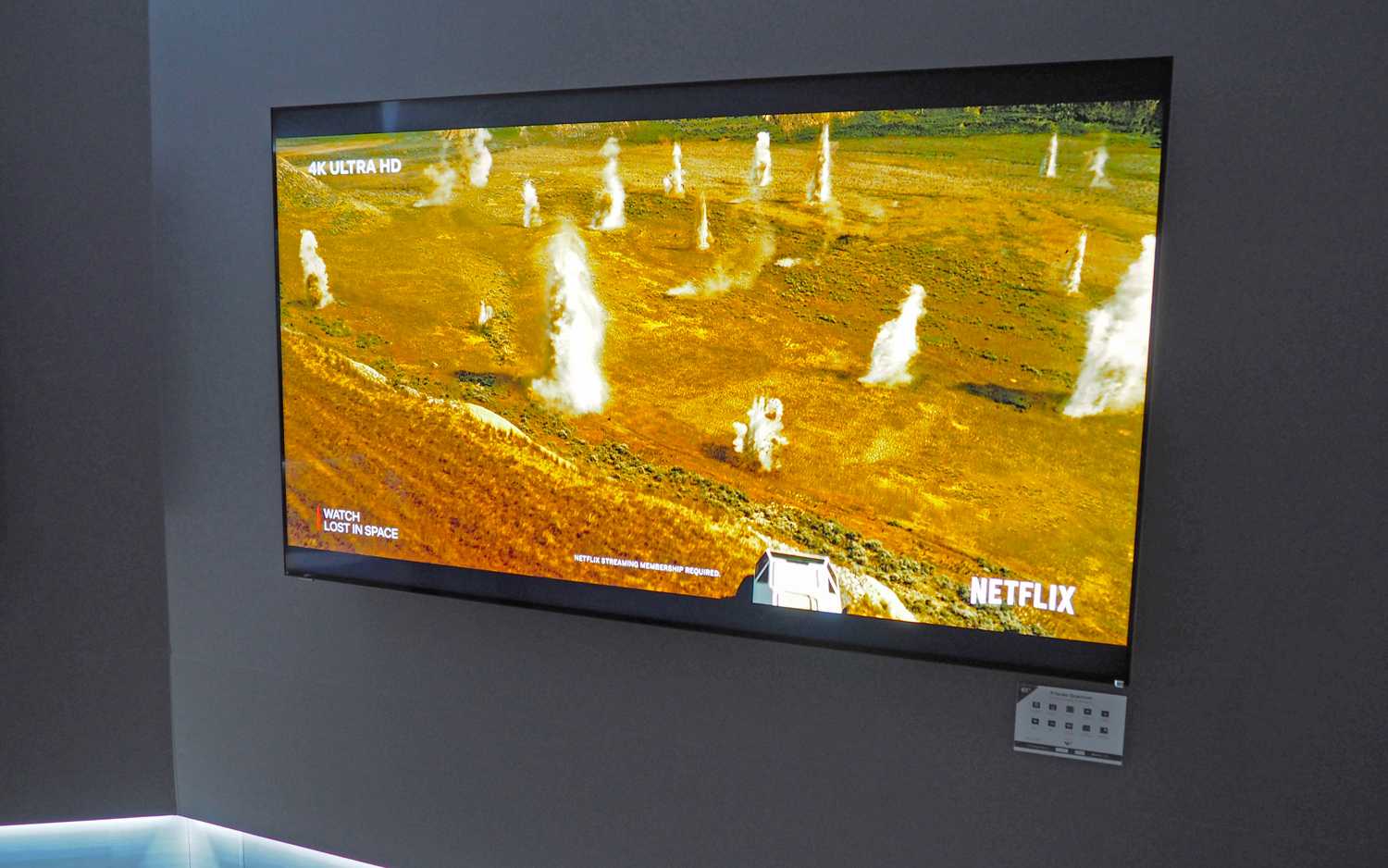
The full array backlight has 192 local dimming zones and doubles the brightness of the backlight to peak brightness of 2,000 nits. The set also boasts Vizio’s Quantum Color Spectrum technology, which supports more than 1 billion colors. The result is an LCD display that approaches OLED in its ability to show deep black levels and brilliant bright colors.
To demonstrate the importance of backlighting technology, Vizio gave us a special demo featuring its range of 2018 TVs, but with all of the filtering and image enhancing layers between the backlight and the LCD display removed. The result was a selection of TVs that clearly showed the individual backlight LEDs that illuminate the screen, with discrete blocks of LEDs making up individual backlighting zones. The 192 local dimming zones of the P-Series Quantum offered tightly focus light for illuminating bright elements on-screen, while lower-end models had larger zones that couldn’t prevent spillover into portions of the screen that should remain dark.
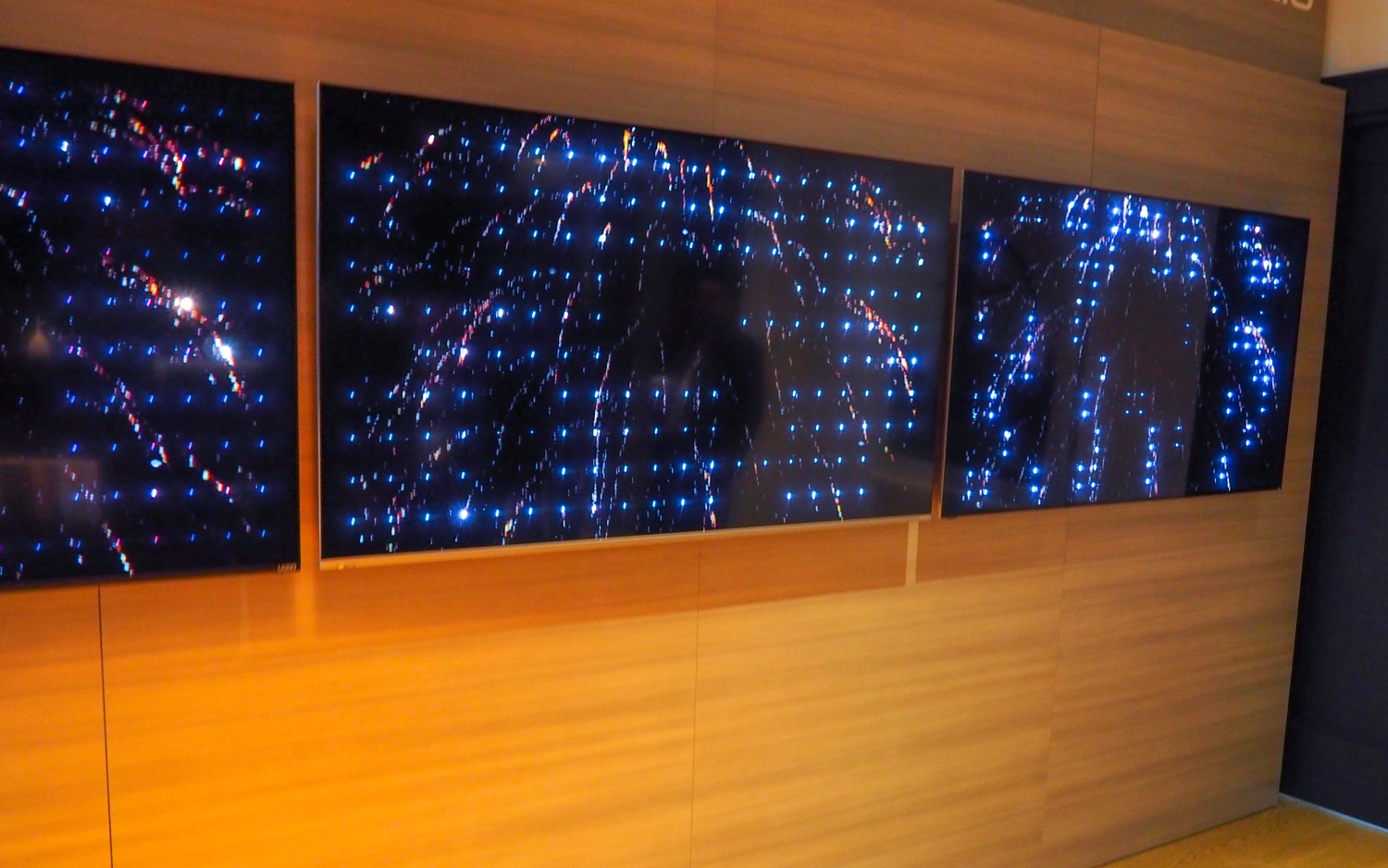
Seeing the P-Series Quantum side-by-side with an OLED display, the differences were visible, but not as dramatic as one might expect when comparing an LCD display to OLED’s perfect blacks. While the black levels were slightly better on the OLED display, the P-Series Quantum did offer superior bright colors, thanks to that super-bright backlight, and even expected issues like over-illumination and elevated blacks were far less of an issue than you’d anticipate.
The P-Series Quantum will sell for $2,199.99 and only be available in the 65-inch size when it comes to market this summer.
P-Series (standard 4K)
Vizio’s general performance-focused model line is the P-Series, without the extra Quantum dot filtering or crazy-bright backlight. But don’t write off the rest of the P-Series. Coming in 55-, 65- and 75-inch sizes, the 4K smart TV features an impressive 1,000 nits of brightness, full array backlighting with up to 120 local dimming zones (the number varies by screen size) and support for Dolby Vision HDR (as well as HDR10 and HLG). The display has an effective refresh rate of 240Hz, and support for more than 1 billion colors.
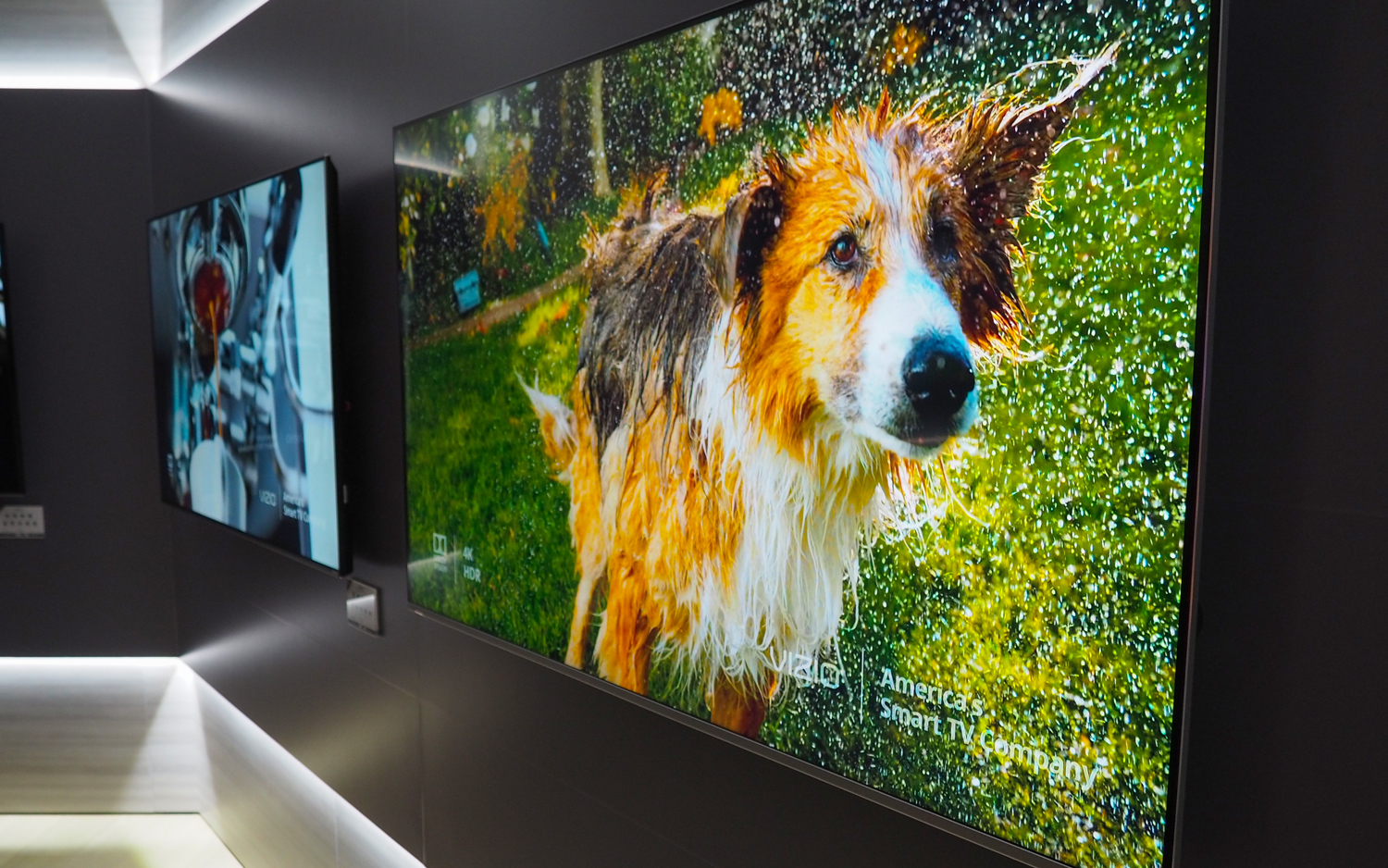
With Google Chromecast built in, you’ll be able to share content between your devices and the TV, and you can use the set with Amazon Alexa or Google Assistant. When using Google Assistant, whether through a Google Home smart speaker or your smartphone, you will not only be able to control the channel and settings of the TV and stream using voice commands, you also can search through content and ask for information like weather, getting a visual cue along with a verbal response, all in a format optimized for the big screen.
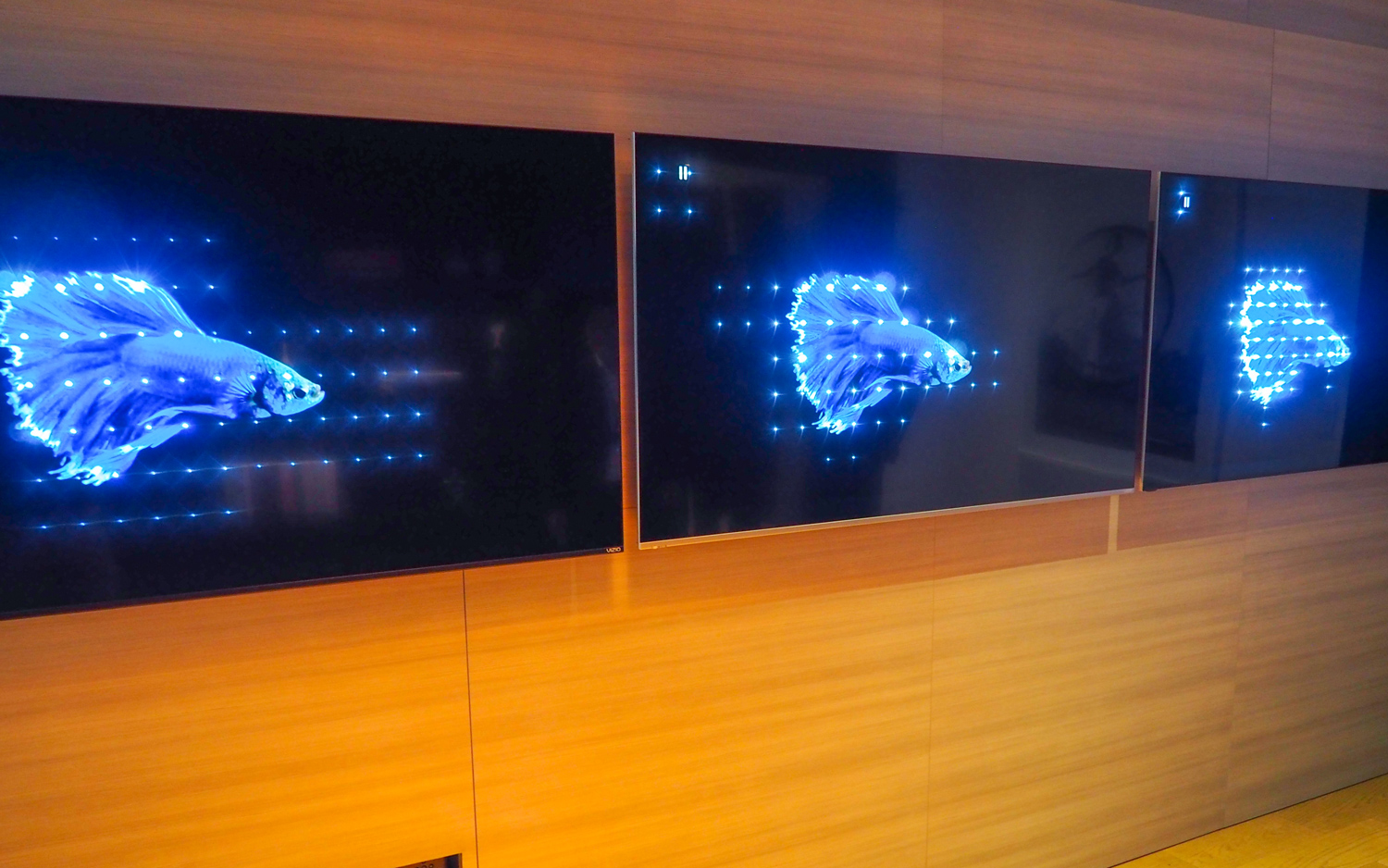
Perhaps most importantly, Vizio offers the standard P-Series at a more reasonable price. The smallest of the bunch, the P-Series 55-inch, will sell for less than a thousand dollars at $899. The 65-inch model will sell for $1,299 — just over half the price of the P-Series Quantum — and the 75-inch model sells for $2,499. All three of these models are expected to be available through Vizio.com and other retailers over the next two weeks.
M-Series
Vizio's mid-range model line is the M-Series. Available in sizes ranging from 55 to 70 inches, the M-Series offers 4K resolution and HDR support, with support for Dolby Vision, HDR10 and HLG formats.
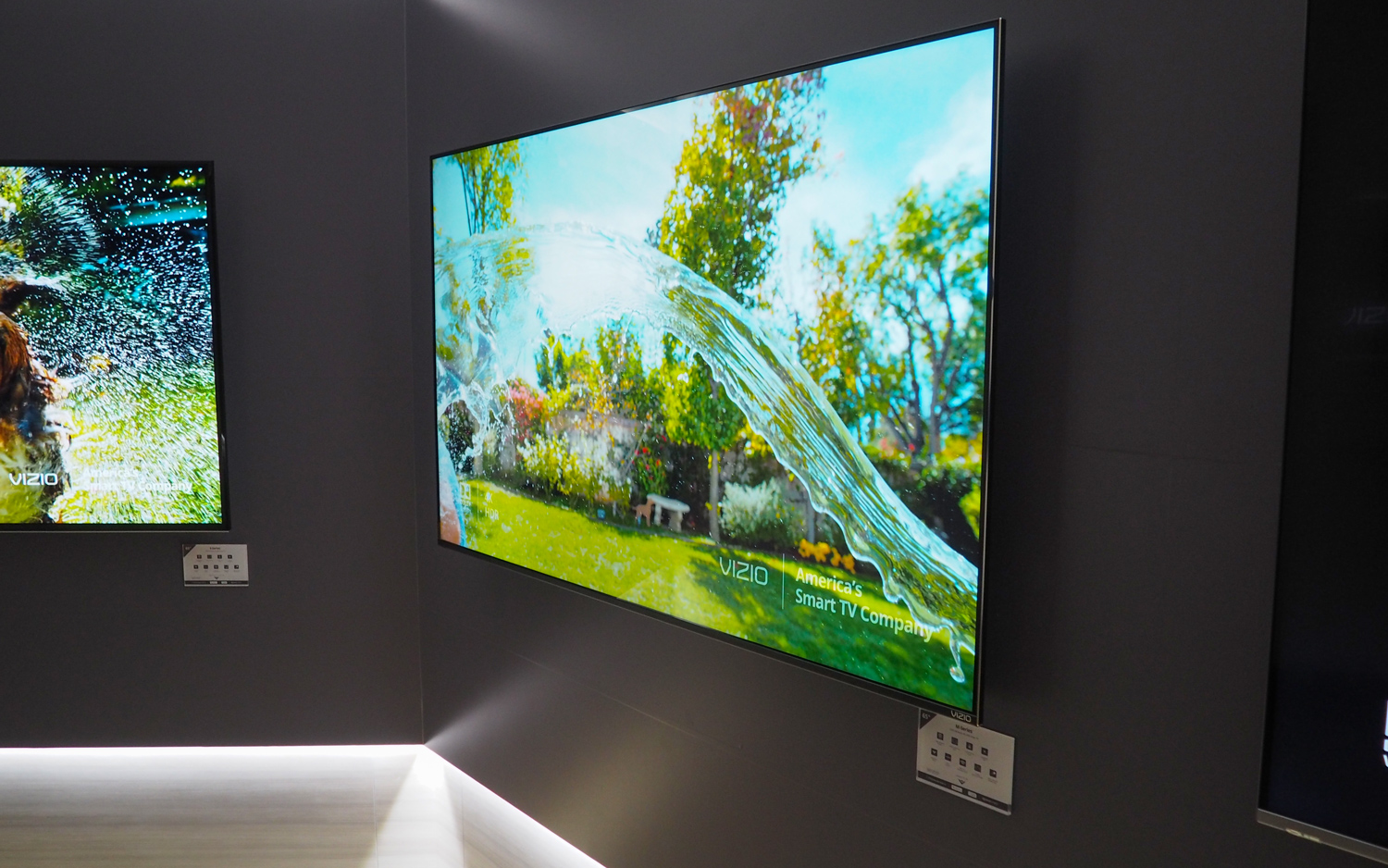
With prices limited to a more affordable range — the most expensive model will sell for $1,499 — you will give up the refined backlighting seen on the P-Series. The M-Series features a peak brightness of 600 nits, and has full array backlighting but with a smaller number of local dimming zones, ranging up to 48 lighting zones on the 70-inch model. Like the P-Series, the new sets will feature VA panels, which deliver better contrast and brightness than an IPS panel would offer.
The M-Series will be available in three sizes, with a 55-inch model selling for $699, a 65-inch model for $999 and a 70-inch model for $1,499. Models will be available through Vizio and retail partners like Costco, Sam’s Club, Target and Walmart over the next two weeks.
E-Series and D-Series
At the more affordable end of the spectrum are Vizio’s entry-level E-Series and budget-priced D-Series. Both feature built-in TV tuners, Vizio’s improved SmartCast smart TV platform and support for Dolby Vision, HDR10 and HLG content.
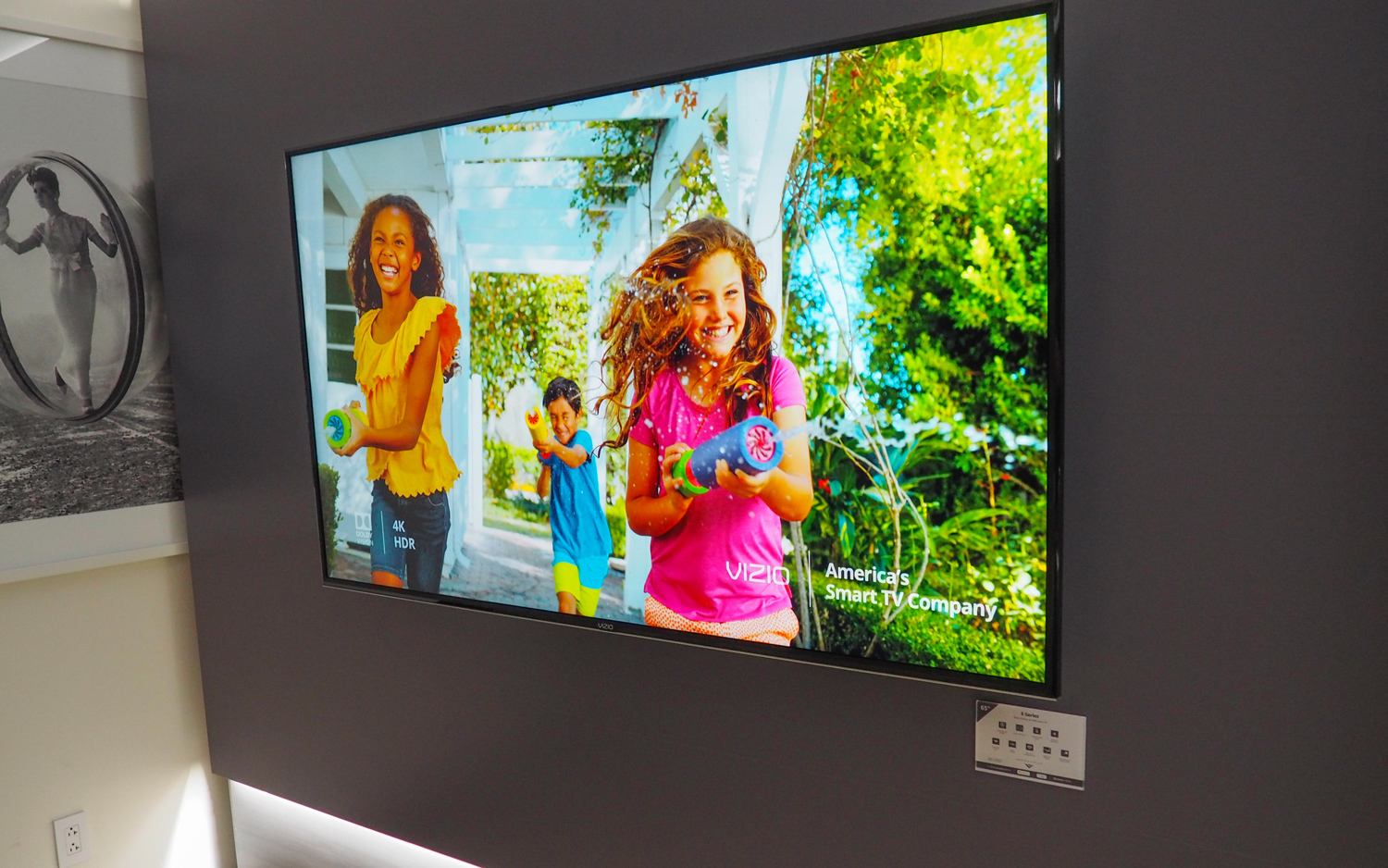
The E-Series has full array backlighting, and with 16 zones of local dimming, it offers decent (though far from perfect) black levels without too much of the blooming that causes unwanted halos around bright on-screen objects. The set has a 120Hz effective refresh rate with a 60Hz panel.
The E-Series will be available in six sizes, and will be priced between $349 for the 43-inch model and $1,549 for the largest at 75-inches. The E-Series will also be offered in 50-, 55- 65- and 70-inch sizes.
While Vizio wasn’t displaying the new D-Series models, we did get a rundown of the new sets. The inexpensive series will be offered in both 4K and full HD resolutions, with 4K models available in sizes ranging from 43 inches and up.
While most TVs in this price range offer edge-lit panels, the D-Series will offer the same full-array backlighting seen in Vizio’s more expensive model lines, albeit without discrete backlighting zones. Vizio also makes no claims regarding the peak brightness of the D-Series, but does offer support for HDR10 and HLG content — but not Dolby Vision.
The Vizio E-Series and D-Series are available now through Vizio’s website and select retailers.
Image Credits: Tom's Guide
Sign up to get the BEST of Tom's Guide direct to your inbox.
Get instant access to breaking news, the hottest reviews, great deals and helpful tips.
Brian Westover is currently Lead Analyst, PCs and Hardware at PCMag. Until recently, however, he was Senior Editor at Tom's Guide, where he led the site's TV coverage for several years, reviewing scores of sets and writing about everything from 8K to HDR to HDMI 2.1. He also put his computing knowledge to good use by reviewing many PCs and Mac devices, and also led our router and home networking coverage. Prior to joining Tom's Guide, he wrote for TopTenReviews and PCMag.
-
dr3yec Just got a 2017 vizio p series and I am disgusted at the broken firmware. How is the firmware on 2018 vizio tv's ? Broken as well ? If it is anything like the 2017 models hdr and arc is broken and 3 months waiting for a fix is unacceptable.Reply

